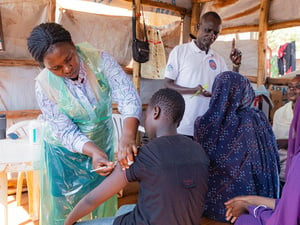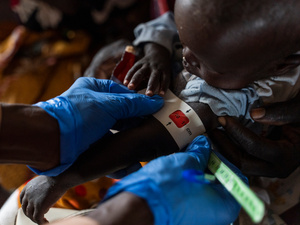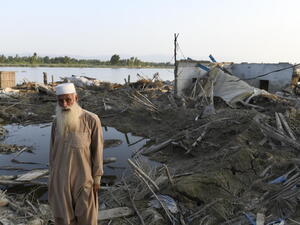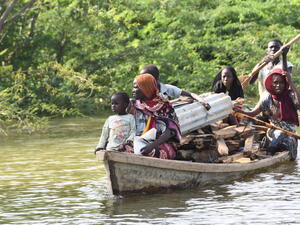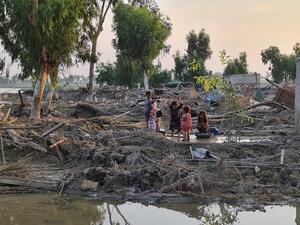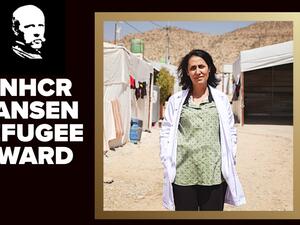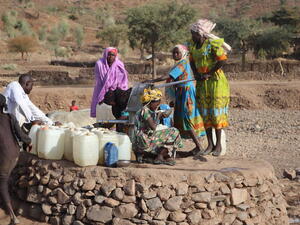Kenya floods: UNHCR's sanitation and disease concerns
Kenya floods: UNHCR's sanitation and disease concerns
Flood waters in Dadaab area refugee camps in north-eastern Kenya have begun receding, several days after heavy rains destroyed more than 650 refugee shelters in the camp, leaving more than 3,000 refugees homeless. A significant number of refugees' livestock was also killed in the torrential rains. Large sections of the two most affected camps - Ifo and Dagahaley - are still under water, impeding access within and around the two camps which together host more than 80,000 refugees, mainly from Somalia. Many of the affected refugee families in Dagahaley camp have now been moved to a community centre and a UNHCR field office. Others have sought refuge among friends or relatives. By Sunday, field staff who had visited half the Dagahaley camp to assess the flood damage noted that 550 refugee shelters had either collapsed or had been washed away. In Ifo camp, some 10 km away, nearly 80 structures had been destroyed. Some five of the 11 schools in Ifo camp were still under water, yesterday, disrupting the re-opening of schools after the April school holidays. Latrines in three schools in Dagahaley camp had also collapsed.
We remain very worried about sanitation and the possible spread of water-borne diseases. Pit latrines have collapsed while some are overflowing. There is stagnant water everywhere. Our health partner at the camp, MSF-Belgium, is prepared to handle an increased number of consultations for various illnesses. On Sunday, UNHCR airlifted some 12,000 litres of much-needed fuel from Garissa, the North-Eastern provincial capital, as parts of the road linking Garissa and Dadaab remained impassable. The airlifted fuel supplies will cover the camps' needs for the next six to eight days. UNHCR and implementing partners rely on diesel fuel for vehicles and to power generators used in the offices, hospitals and clinics, and to run water pumps throughout the three-camp complex of 130,000.
A team of UNHCR and partner organisations, among them UN World Food Programme and CARE, will tomorrow assess the level of damage to the Dadaab-Garissa road - the only road linking the remote camp with the Kenyan capital, Nairobi. The team, escorted by Kenya police on the bandit-prone road, will also have a tractor in the convoy to pull out vehicles that may get stuck. More supplies, particularly shelter material such as plastic sheeting which the refugees use to cover their shelters and fuel, could be brought in by road if flood waters have receded and the Garissa-Dadaab road is found to be useable. We are, however, still looking into the possibility of further airlifts of supplies from the Kenyan port city of Mombassa should the Garissa-Dadaab road remain impassable.

